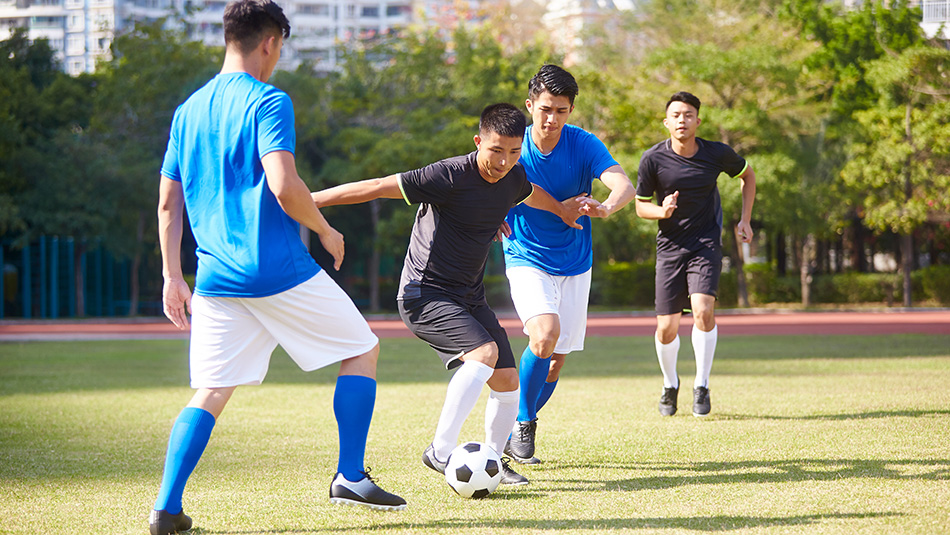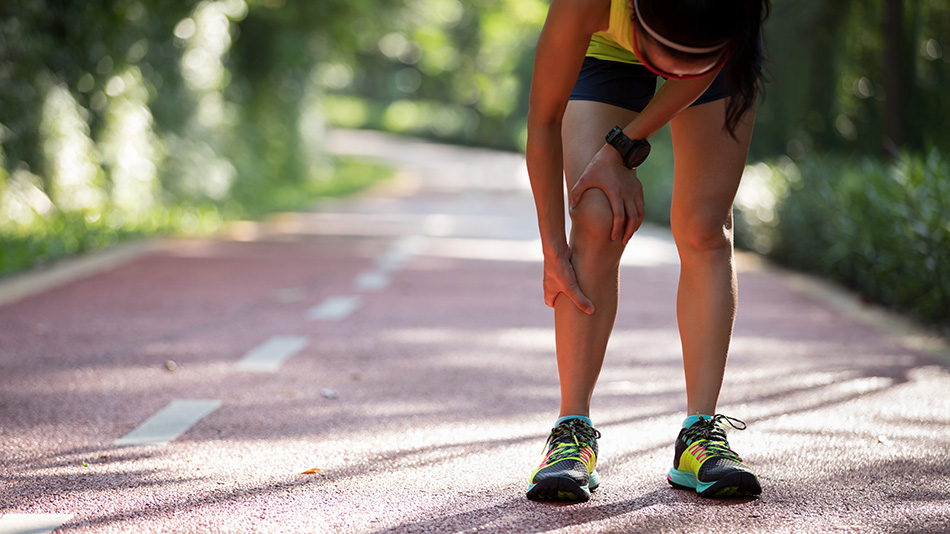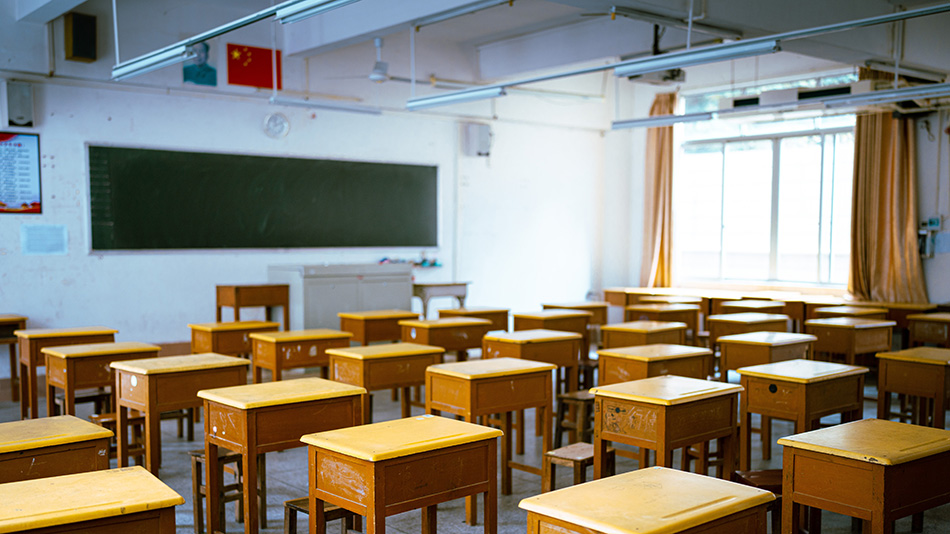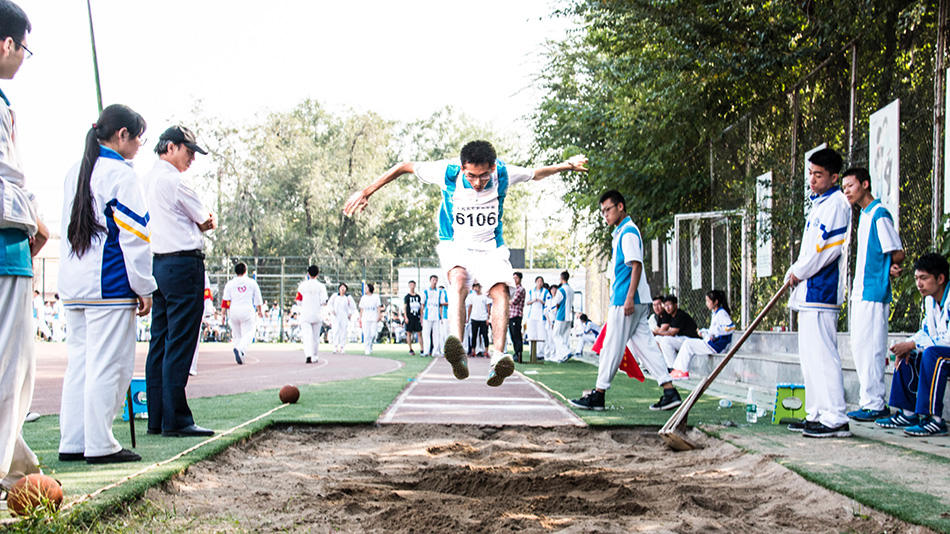In China, many teenagers in backward areas become athletes to get into better universities. Could this path make their dreams come true?
Yuze Huang is a national secondary track and field athlete from Anhui province. He was born in a small town and grew up with high expectations from his family. His parents, like most ordinary families in this town, expected their son to get into a good university, and then leave this poor place.
To fulfil the family’s dream, at the age of 16, Yuze Huang decided to become a “sports student”.
Sports students in China have a different path to university than ordinary students. When young athletes from provincial and municipal sports teams, as well as from sports schools, are awarded the National Secondary Athlete’s Certificate, they are allowed to take the special university entrance exam.
This is the entrance exam for young athletes who have limited talent and are unable to break through on the athlete’s road. Every March, they will take exams in their respective sports. This exam is available to athletes in almost all sports, including track and field athletics, ball sports, winter sports and so on. A few months later, they will take a cultural exam, adding up the two results to make the sports students’ entrance exam results.
Huang, who had modest grades but excellent athletic ability, believed this would be the best way to leave the town. He became one of the young athletes taking part in the 2019 Chinese Sports Students’ Entrance Examination and, like them, was looking forward to a better future.
When Yuze Huang was 14 years old, because of his excellent physical strength, he was selected by a coach from the municipal track and field team to compete in a race. He won third place in that competition and was invited to join the professional team.
But Huang and his parents did not take up the olive branch at that time. After passing the high school entrance exams, Huang was admitted to a major high school in Anhui, where he attended classes like his classmates and only had about two hours of training time in the evenings. Although he was not good at his studies, he didn’t miss out any lessons he was supposed to take.
Whether or not to join the professional team early and leave school is a life-changing “gamble” for children who are selected.
Xue Li from the Mudanjiang speed skating team was once faced with such a decision. She had been training at an amateur sports school since she was eight years old, and when she was 11 years old, a coach invited her to join the professional team for full-time training.
Due to her family’s concerns about future education, the professional team allowed Xue Li to spend half a day at the regular school and half a day training at the sports school, and in the evenings, she had to attend tuition classes to catch up other classmates. After two years of this life, Li was no longer able to cope with the increasing load of homework and training at the same time. After training, she couldn’t help but often fall asleep in the tutorials. Eventually, she dropped her school work and devoted herself to speed skating training at 13 years old.
Even though Chinese education departments have regulations for sports schools to have half-day culture classes, not many athletes take study seriously in an atmosphere where athletic achievement is the highest priority.
One teacher from a sports school said, “If good students means the can listen to the class but don’t do their homework, about one in ten students are serious about their studies.”
The difficulty of balancing academics after joining a professional team means that becoming an athlete comes with the risk of not achieving results in competitions as well as not studying much. As a result, Huang spent first two years in high school until he decided to join the municipal athletics team to train more professionally.
Every morning, Huang used to running, practising the shot put and triple jump. In the afternoon, he would do strength training. In order to get into a better university that was beyond his academic ability alone, “education” had to give way to “sport”.
When he first arrived at the municipal team, most of the athletes were from the city. Huang, who was selected from a high school sports team in a small county, was given the cold shoulder by the coach.
After three months of training, Huang’s test score was only 60, and his coach thought he would not be able to get into the university he dreamed for. This statement made Huang so unconvinced that he was determined to prove himself, even if it meant trading his health for results.
He practised very hard that winter. He had swelling on his knees, breaking bones in his two ankles, also breaking the fibula in his right ankle. Huang said: “At that time, I went to buy painkillers every day. The owner of the pharmacy got to know me and had the painkillers ready when he saw me.”
After that winter Huang’s score rose to 88 in the spring test, the best score of this year’s students on the team. A result that was good enough to get him into his initial goal, Anhui Teacher’s University.
At the start of spring, he changed the target written on the front of his bed from Anhui Teacher’s University to Shihezi University, with the ambition of getting into one of China’s top 100 universities.

However, that night’s training shattered his dream that was so close at hand.
The track and field team was training for a 650m race that night. The lights were not turned on in the stadium and there were many passers-by walking on the track. When the whistle blew, Huang Yuzhe was at the head of the line. Suddenly, two passers-by appeared in front of him and he couldn’t slow down. He crashed into them and tore the muscles on the right side of his back.
He recorded his emotions in his post: “That night, the stadium was filled with my cries. The moment was really devastating to the core. I was lying on the ground and unable to move, my teammates were gathered around me and the coach was sighing beside me. …… (I) felt like the sky had fallen and any dreams were far away from me.”
In China’s sports schools and low-level professional teams, specialised coaches are always in charge of the whole team and there is a lack of recovery training and medical care. This rough training approach has resulted in a high injury rate among China’s young athletes. A study of weightlifters at sports schools in Fujian showed that the injury rate among young athletes aged 14-16 was as high as 83.15%, while another survey of young athletes from Hubei found that 73.5% of young athletes had been injured during training.
According to Mingyi Liu, an associate professor at the Wuhan Sports College, China’s athlete training system has long relied on the huge-crowd strategy, and coaches rely on experience rather than science. Coaches at sports schools and professional teams are often retired professional athletes, selected for their good athletic performance, rather than teaching ability and knowledge of sports science.
But there was no turning back. After his breakdown, Huang still had to return to the municipal athletics team. He did not want to give up all the efforts just because of injury. After a week in hospital, he decided to leave the hospital to train.
The reality was a heavy one. The training he was once able to complete with ease was now causing him pain. Huang said: “The 800m, which I didn’t want to do before, became the only thing I wanted because my back didn’t hurt as much as other training when I was running it.”
The day before the final exam, Huang’s back injury had prevented him from standing for more than half an hour, and he had difficulty even completing the warm-up exercises before training. The pain was a warning sign that told Huang he would not do well in the exam. But the dream he had written on the front of his bed made it no way to give up without trying.
After arriving at the examination place in Wuhu, Huang went to a private hospital and received six injections and bought a bag of painkillers. He said: “At that time, I only thought that as long as I could take the exam, I could do anything.”
In the end, Huang scored 83 on his exam. He was actually surprised when he got this score, as it was already much better than the last time he tested in the team. But it was still a long way from the dream that was once within his reach, written on his bedside.

After failing the exam, Huang wanted to leave this painful road. He said: “(I) knew where the injury was and I knew that injury was not changeable. That means there’s no way to back to the standard before I got injured …… actually that’s quite a big blow to a person.”
Over the year, Huang’s injury has gone back and forth. To make matters worse, he has not been given enough recovery time after the injury. Before the last injury was healed, the team’s intense training caused him to add a new one.
Huang said: “My injury often relapsed, but I was asked by the coach to continue training with the team at a high intensity. I chose to return to the team after my injury was healed, then the coach started to hate me.”
Due to the lack of an efficient, scientific approach to training, many youth team coaches choose to increase the training load instead. In China, it is normal for professional sports teams to train eight hours a day, seven days a week, for some more relaxed teams, it could be six times a week.
“This situation continues into secondary schools and high schools, then students can only say goodbye to their studies,” said Bingshu Zhong, who is headmaster of the Capital Sports College. The backward training methods not only leaves Huang with no time to recover from his injuries, but is also a major reason why athletes like Xue Li have to give up ordinary school at the age of 13.
Zhong believes that the Chinese government should set a limit on the loads of training per week in sports schools, rather than just a limit on the number of hours of cultural classes. The efficiency through scientific training is the right way to go. He said: “It is the same as our cultural education. If we reduce the time for class hours, maybe some teachers don’t know how to improve students’ academic performance in an effective way. The same is true, we need to improve the training ability of coaches first.”
In fact, Huang is clear that there is another reason for coaches’ over-training. He explained: “Because a lot of people who come to the team, just like me, don’t do it for the love of the sport, but see the path as a shortcut to college.”
The next year’s entrance exams would be the end of them being athletes, so the coach chose to gain better results by excessive training. Huang’s resistance, only to be seen as not being able to work hard enough.
Huang also tried to talk to his parents, but his parents, who knew nothing about sports injuries, were not on his side. He said: “They think what the coach says is right. They don’t understand (injuries), they just believe you should listen to the coach.”

Injuries and unfair treatment by the coach made Huang want to give up his athletic career, but the dream of going to big cities made him unable to leave this shortcut.
His parents wanted him to study and train for an extra year, and Huang couldn’t refuse their request. He said: “Because my family gave me so much support and so much time, but I got into this situation. Then they said you are still young, why don’t you go and try again? So I tried again.”
In 2020, the acceptance rate for China’s special university entrance exam was 37.3% and that figure has gone down for three years in a row. The exams, which have a two-thirds elimination rate, are stopping more and more young athletes at the door of universities, where they must choose between going into the workforce or restudying. As sports school graduates receive a secondary school diploma, which is far from enough in an increasingly competitive job market, many will choose to restudy one year.
Before going back to school, Huang wrote in his post:
Go for it! 2021, I will definitely succeed!
He returned to the high school sports team, but this time, injuries haunted him like a nightmare, making his determination come to naught.
In one period, Huang’s physical condition improved and he returned to about 80% of his peak performance. “Then the coach increased the training load, making it more and more unbearable for my body, so it started to hurt again and again.” said Huang.
Before his second exam, Huang had just been out of hospital for two weeks. During a training session, he couldn’t get any power at all from the waist. He lying on a small blanket next to the playground, unable to move, until his father came and took him to the hospital.
What followed was like a repeat of what happened a year ago. In the end, what Huang wanted was not a result, but to give himself a result for his two years of perseverance and, more importantly, to give his family a comfort.
Even though his parents are not fully aware of the pain he suffered from over the past two years, Huang understands that they have done everything they can to support him. He said: “As parents, they have given me all they can. I can understand that.”
A few months later, Huang took the general university entrance examination. He clearly realised that the dream of going to a top university through sports was over.
But for the sake of his family’s expectations, he did not regret the past two years as a sports student. Huang said: “All the hopes of my family are with me, so if I can get into a good university, my family will be very happy. If I can choose again, I would definitely still go for that road.”
“Sport is the way for children from poor families” is a saying that is widely spread in China. Professional teams can pay kids in their early ages, and kids from poor families are more able to suffer. Because young athletes can earn money through competitions and go on to higher education through sports, less affluent families see sports as a way to leave undeveloped areas.
Yet by following this way, health, education and socializing all have to give way to training. In the past, the training guideline in China was “more strict, more difficult, more hours”. And now, a more scientific and balanced system is needed so that young athletes do not have to give up the normal growing environment.
